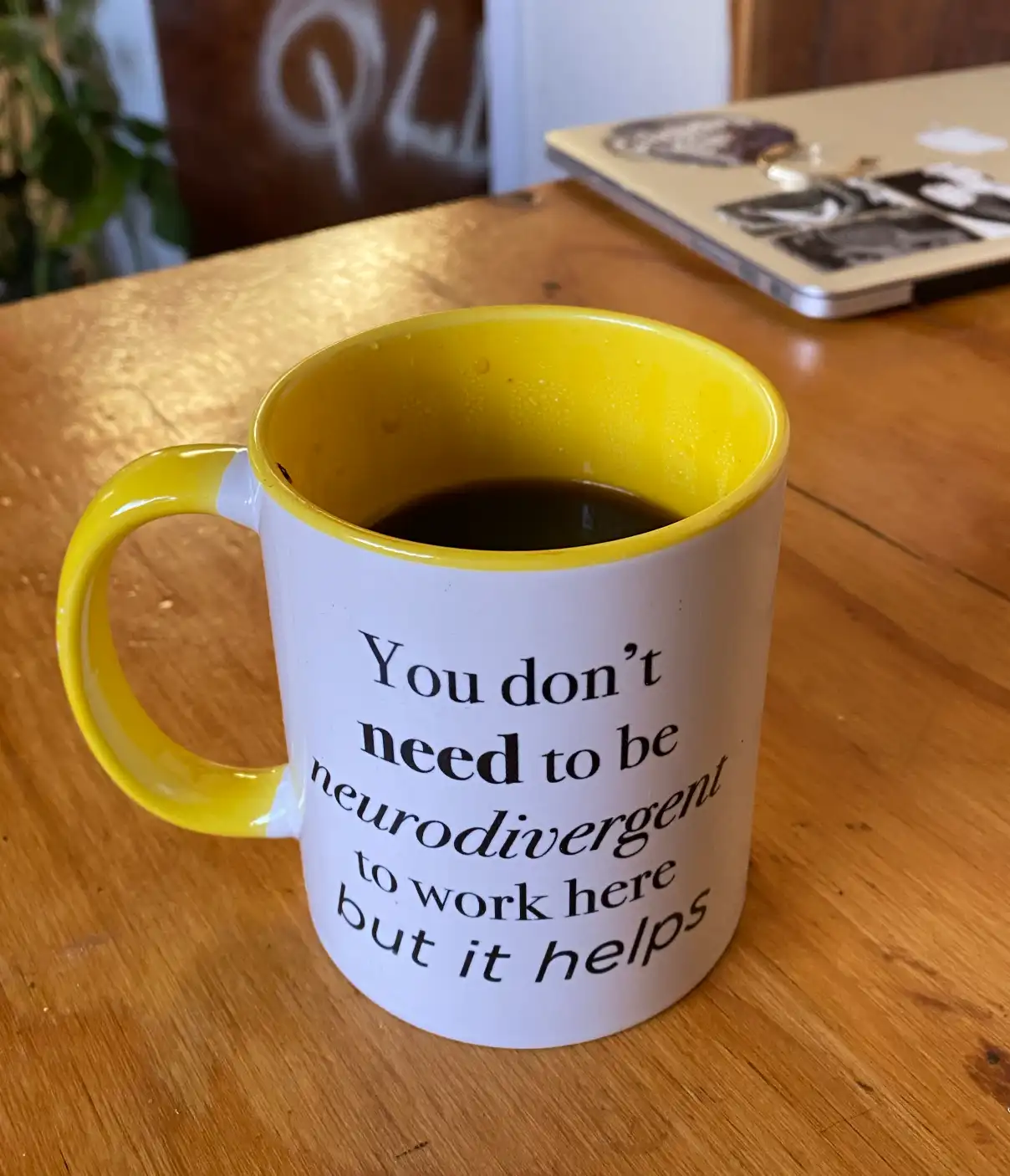Diversity in teams
Multiculturalism, pluralism and eccentricity at small scale
2020-05-27 — 2022-07-28
Wherein the economic arguments for team diversity are examined and the limits of productized diversity training, including evidence of backfire, the role of neurodiversity is considered, and data-driven interventions are critiqued.
Content warning:
Under-informed self-learning from a physical scientist on highly fraught social matters
1 Utility of team diversity
A note salad of arguments people make for the usefulness of having diverse people in teams/societies, mostly economic arguments.
Does diversity help attain wisdom? Sometimes, it seems. Scott Page calls this the diversity dividend. Quantifying when and how it works interests me. Possibly diversity and tolerance are not just intrinsic moral goods, but may pay literal dividends in terms of avoiding groupthink in your team. What are the conditions for this happy state? Dobbin and Kalev (2016) argue that punishing failures can be counterproductive, favouring voluntarism and transparency, which might harness status psychology of the incumbent power brokers.
McKinsey report, Vivian Hunt, Dennis Layton, and Sara Prince: Why diversity matters:
While correlation does not equal causation (greater gender and ethnic diversity in corporate leadership doesn’t automatically translate into more profit), the correlation does indicate that when companies commit themselves to diverse leadership, they are more successful.
(They could possibly have done better than that mealy-mouthed correlation phrasing if they wanted, via causal analysis.)
Other random readings: Chris Dillow, diversity trumps ability.
OK, I suspect most of that is not highly controversial, although people might perhaps set the bounds about what “too much” diversity is rather differently.
For a more lavish viewpoint, consider Georgi (2022):
The conclusion I draw from many years of physicist watching is that if you want to quantify what makes a great physicist, you must use a space with very many dimensions, a different dimension for each of the very many possible ways of thinking that may be important for really interesting problems. I sometimes imagine a spherical cow model of physics talent in N dimensions where N is large and talent in each dimension increases from 0 at the origin to 1 at the boundary, the N-dimensional version of the positive octant of a sphere. This, I learned from Wikipedia, is called an “orthant”. Each point in my N-dimensional orthant is a possible set of talents for physics. Great physicists are out near the boundary, far away from the origin. If we assume that the talents are uniformly distributed, you can see that in my spherical cow model, the fraction of possible physics talents within ε of the boundary grows like N times ε for small ε. If N is very large, as I think it is, that means that there is a lot of space near the boundary! What this suggests to me is that there are a huge number of ways of being a great physicist and that in turn suggests there are many ways of being a great physicist that we haven’t seen yet.
In this model, we are allowing that diversity might be intrinsically important because that captures useful mavericks under the assumption that the competence space is high dimensional. The dimensionality of the space might be estimated; I think that many univariate testing enthusiasts will argue they have so estimated it and it turns out to have a very low intrinsic dimensionality. FWIW I can think of evidence about either way, depending on what I am going to argue for as the space within which diversity happens, but that this model is out-of-scope for now.
Hey, let us go further. Maybe diversity is an intrinsic moral good?
2 Bad strategies to cultivate diversity
2.1 Productize diversity training courses
tl;dr there is little evidence that diversity training, as typically practised by large organisations keen to be seen to be diversity-friendly, is effective in practically improving friendliness towards diversity. There is weak evidence that these programs are actively hurtful. There is strong evidence that diversity training programs are an effective intervention to deflect lawsuits, bad PR and so on, thus protecting institutions from the negative consequences of failing to attain friendliness towards a diverse workplace without actually requiring them to achieve it.
Dobbin and Kalev have a miniature publication mill dedicated to digestible summaries of meta-analyses and case studies here, all very readable, but also lacking in follow-up citations and thus not easy to verify (Dobbin and Kalev 2021, 2016, 2020; Kalev and Dobbin 2020). Dobbin and Kalev (2018) cites some actual research.
A large and excellent single study is Chang et al. (2019), which finds, if I might simplify a little, that one-off training is excellent at producing the feeling that something has been done, at least in people who were already somewhat sympathetic to the goal, but not effective in actually changing behaviour.
🚧TODO🚧 clarify
Business executives believe that doing these programs has genuine value to the bottom line in terms of protecting them in the face of lawsuits, so they are fairly widespread. Critically, however, the lawsuit-protecting attributes of training do not require the trainings to be effective, and they generally are not. Indeed, as this summary from Frank Dobbin and Alexandra Kalev in Harvard Business Review hints, the main question in this literature is whether the trainings backfire by annoying people:
Do people who undergo training usually shed their biases? Researchers have been examining that question since before World War II, in nearly a thousand studies (Paluck and Green 2009). It turns out that while people are easily taught to respond correctly to a questionnaire about bias, they soon forget the right answers. The positive effects of diversity training rarely last beyond a day or two, and a number of studies suggest that it can activate bias or spark a backlash. Nonetheless, nearly half of midsize companies use it, as do nearly all the Fortune 500.
Some of the backlashes can be very bad. Leigh Wilton, Evan Apfelbaum, and Jessica Good (Wilton, Apfelbaum, and Good 2019) find that emphasising themes of multiculturalism can increase subjects’ belief in race essentialism (consider Tema Okun’s work in this light) while Madeline E. Heilman and Brian Welle find (Heilman and Welle 2006) that when teams are assembled with an explicit diversity goal in mind, women and Black group members are perceived as less competent, and “this effect occurred regardless of the proportional representation of women or the degree of the group’s heterogeneity”.
I don’t think many on the left are actually super enthusiastic about these diversity trainings, but the general sense is also that only a bitter crank would actually complain about them. But there is real evidence that they are at least sometimes making things worse, which strikes me as a big deal. For example, Michelle Duguid and Melissa Thomas-Hunt (Duguid and Thomas-Hunt 2015) find that when you tell people that stereotyping is widespread, they stereotype more.
2.2 Implicit Association Tests
Replicability-Index has an interesting round-up of Implicit Bias Research, by which they mean the premise that a crucial source of inequity in practice, and good point of leverage, is subconscious sensory cues:
The controversial and novel suggestion was that prejudice could work like colour perception. We automatically notice skin colour and our unconscious guides our actions based on this information. Eventually the term implicit bias was coined to refer to automatic prejudice.
Some highly cited studies suggested that subliminal priming influences behaviour without awareness (Bargh et al., 1996; Devine, 1989). However, in the past decade it has become apparent that these results are not credible (Schimmack, 2020).
For a layperson guide, try Implicit bias trainings are used to fight racism, but IAT science is flawed.
Worth a read. The assertion is not that prejudice, personal or institutional, does not exist. Rather, the assertion is that unconscious bias, as measured by the Implicit Association Test, cannot be shown to be important on current evidence. It does not seem a stretch to argue subconscious cues exist and do something; e.g. it seems to me that I pre-judge people who do not look like me all the time, on a variety of dimensions, even if I would prefer that I did not. On the other hand, I do my best to notice such prejudice in myself and to compensate for it. It is difficult to assess how successful I am at that. I surely do not compensate for my instinctual prejudice perfectly. But whether I do or not, there is in me, as in everyone, a whole layer of thought and practice between instinct and action, which IAT measures ignore. Worse, to the degree that IAT-bias might be important, it seems unlikely that it can be persistently improved by training of the sort usually delivered.
C&C Schimmack on Psychological Science and Real World Racism: tl;dr The evidence is weak that IAT measures an essential ingredient of practical prejudice and also weak that prejudice can be fixed in any persistent way by a productized training course delivered over a few days.
If I interpret this article correctly, I am led to wonder if this particular notion of prejudice gains public traction because it is one that you can simply wash away with some simple, commodifiable training, which would be convenient for various interests. (“We have been accused of being biased in the past but now we have paid for X sessions of anti-bias training so shut up.”) A world in which bias was harder to address and harder to measure would be less convenient for the PR needs of modern institutions.
This measure has a tokenism/table stakes risk.
- Mixed race couple argue against the utility of treating race as a unit of analysis: The Trouble With Race and Its Many Shades of Deceit
3 Broader models
Bursztyn and Yang (2022):
We establish a number of stylized facts. First, we document four facts on the pattern of misperceptions. (a) Misperceptions about others are widespread across domains, and they do not merely stem from measurement errors. (b) Misperceptions about others are very asymmetric: Namely, beliefs are disproportionately concentrated on one side relative to the truth. (c) Misperceptions regarding in-group members are substantially smaller than those regarding out-group members. (d) One’s own attitudes and beliefs are strongly, positively associated with (mis)perceptions about others’ attitudes and beliefs on the same issues.
Second, we present three patterns on the effects of recalibrating misperceptions. (a)Experimental treatments to recalibrate misperceptions generally work as intended. (b) Treatments that are qualitative and narrative in nature tend to have larger effects on correcting misperceptions. (c) Although some treatments lead to important changes in behaviours, large changes in behaviours often only occur in studies that examine behavioural adjustments immediately after the interventions, suggesting a potential rigidity in the mapping between misperceptions and some behaviours.
4 Alternatives that might be worth trying out
This is a hard area that I am really interested in. I am vaguely sad that we seem to make so little progress here; Often rather than substantive change people get stuck in a tokenism/table stakes argument about cheap talk.
It is easy to imagine other ways of measuring workplace diversity and safety, albeit ones that institutions would be less likely to support. Sexual harassment complaints and resolutions, anonymous surveys of employee wellbeing etc. These require organisational commitment and put the weight of responsibilities on the institutions rather than the individuals, however, and that is clearly going to get some pushback.
Whether token and/or ineffectual efforts are better at least than no effort is a hot button topic. Also whether tokenistic efforts detract from substantive efforts, that one can get you in a fight; This is the classic table stakes/tokenism argument.
For the moment, since this is my blog, we have the luxury of ignoring that one and moving on to considering effective interventions.
4.1 Data-driven interventions
Gino and Coffman (2021) claim to have a list of prescriptions to deliver diversity interventions. Frustratingly the actual study and data is not linked from the article and I cannot find it, so I cannot really endorse it. I hope it turns up because the effects they claim are significant and highly actionable.
Glad I put that proviso in; turns out that Gino is at the centre “Clusterfake” fraud case, and it seems that it is likely that no data will be forthcoming and that we would not trust it were.
Methodological note: Data-driven interventions into human systems are hard at the best of times and this is definitionally super-hard because we expect intervention effects to be important here. That means we are at risk of failing to generalize if we are not careful.
4.3 Stories
There is evidence, I am told, that narrative can also improve your empathy for other people.(Johnson, Huffman, and Jasper 2014; Bormann and Greitemeyer 2015; Oatley 2016; Kidd and Castano 2013). I would like to know more about that.
5 Institutions
There is a review of institutional arrangements that help with sexual harassment cases in Dobbin and Kalev (2020), but it is lacking in supporting evidence. Obviously I need more and better links on this theme.
6 Neurodiversity
Often when we talk about diversity, we assume a classic minority group based on ethnicity or gender. But what about people with invisibly different brains? Is there a space for PTSD in organisational culture? Autism? Depression? Borderline personality disorder? Sociopathy? just plain eccentric…
What does medicalisation of neurotypes even do? There was a time when drapetomania was a subject of much workplace friction.
Autism Spectrum issues are pertinent for me.
- Autism inclusive workplace
- Creating an Autistic-Friendly Workplace · Public Neurodiversity Support Center
- Alexey Guzey, Neurodiversity, mutants, and organisational design.
See autism and allism.
7 Incoming
Duncan Sabien, Social Dark Matter
Expanding Equity Inclusion & Belonging Guidebook; powerpoint slides that crystallize a particular model of inclusiveness (a slide on microaggressions, a slide on implicit bias etc)
The Carpentries Toolkit of IDEAS
The Toolkit of IDEAS (Inclusion, Diversity, Equity and Accessibility Strategies) is a practical resource for Carpentries’ Instructors, helpers, and workshop hosts. We know that many people care about inclusion, diversity, equity and accessibility but are not sure how it connects to teaching foundational coding and data science skills. This toolkit aims to bridge this gap.
Lots of tips about how to make workshops accessible to diverse needs. IMO a pretty good checklist of things to try, shorn of excess woo-woo.
Creating an Autistic-Friendly Workplace · Public Neurodiversity Support Center


